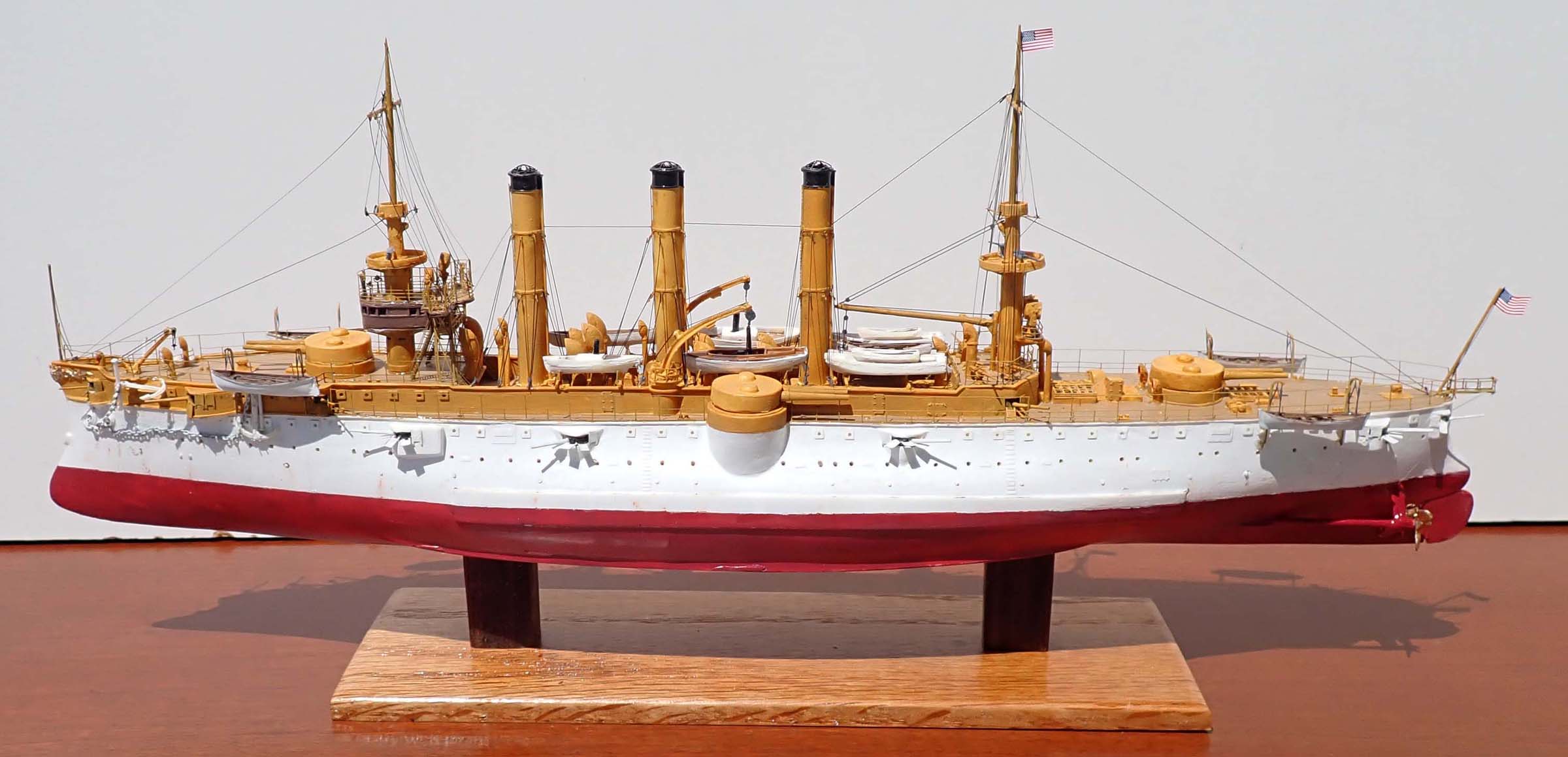
1/350 USS Brooklyn, ACR3 (Iron Shipwrights)
|
by Robert Apfelzweig |

1/350 USS Brooklyn, ACR3 (Iron Shipwrights)
The armored cruiser USS Brooklyn was commissioned in 1896 and played an important role in the blockade and Battle of Santiago de Cuba during the Spanish-American War (May-June 1898), being struck in the latter event some 20 times by Spanish shells while suffering minimal damage and only one man killed and one wounded. In her design, she was intended as an improvement over the previous USS New York (ACR2) with the addition of another pair of 8-in. guns, and was the only American armored cruiser (after the ill-fated, initially categorized as a second-class battleship, USS Maine) to have wing turrets and a significant tumbledown hull. The US Navy, still in its relative infancy as a steel navy power, tried both electrically powered turrets (forward and starboard guns) and steam-powered turrets (rear and port guns), settling on the former for all future designs. Overall, the ship was well-armed with eight 8-in. guns, twelve 5-in. guns in casemates, and a dozen 6-pounder Driggs-Schroeder quick-fire mounts, some in casemates, some on exposed deck mounts and one or two pairs apparently available to protrude through hull openings. Aside from the casemate mounts, I selected the rear boat deck astride the mainmast to mount four of these, using extra 3D-printed guns from my current build of the ISW battleship USS Connecticut. I used brass B&D barrels for the 8-in gun turrets (they were too long, requiring deep drilling into the gunports) and Master Model 5-in./.38 cal. gun barrels for the secondary guns. ASW's resin kit is apparently one of their older ones and comes without 3D-printed parts, and so a significant amount of cleanup, puttying and sanding was necessary to clean everything up, but the hull was fairly easy and the deck very cleanly cast. Online photos of the ship taken at the time of the Spanish-American War show her in a white and buff color scheme, with some photos showing the entire hull white and others showing, as I chose to portray this ship, with the buff color extended in an unbroken line to the bow. A modest amount of scratch-building was needed, as with the little 1-pdr. saluting guns in the mast platforms; later in her career these were replaced with additional searchlights. Photos show that in 1898 the Brooklyn had only four large searchlights, two on the forward bridge wings and two on a small mainmast platform facing aft.The USS Brooklyn served in a variety of supporting roles after 1898 and was reactivated for World War I, being assigned to the Asiatic Squadron in late 1915 and to look out for American military and diplomatic interests in Chinese, Japanese and Russian waters through 1920; she was decommissioned at Mare Island Navy Yard in March 1921 and sold for scrap in December of that year.
